What I Learned About Guillotines From Gordon Ryan
The Blueprint To Becoming A Guillotine Specialist
I went from zero success with guillotines to tapping almost everyone in my gym in just 3 weeks. What if I told you the same thing could happen for you?
I recently watched Systematically Attacking The Guillotine by Gordon Ryan and it has revolutionized my game, without a doubt my favorite jiu-jitsu instructional. In this DVD, Gordon teaches entries, maintenance, and finishing mechanics. It's much shorter and more concise compared to other of his instructionals, so be sure to check it out.
Today I wanted to give you some of my notes on the instructional and what to focus on when developing these skills. Rather than go into too much detail, I prefer to translate this instructional material into a tool that directs intention and attention. So let's get started.
Finishing a Guillotine
To finish a guillotine, we want to crunch our opponent's chin into his chest, that's all you need. In the instructional, Gordon goes into specifics on how to do this, but the general idea is to just force the chin into the chest any way you can.
We need our arm wrapped around the neck for the choke, so our opponents will usually try to get our hands out of his neck, and here's one of the most important ideas. When we are on our opponent's back, the defender has a primary defensive hand and a secondary defensive hand. It is exactly the same in the front headlock. The cross hand is the primary defensive hand that completely prevents us from choking, while the secondary hand only assists. Believe me when I tell you that this idea blew my mind.
So every time you have a head and an arm, your goal is to remove the defensive hands, especially the cross hand in relation to your choke arm. You can do this by fighting with your hands (keeping your head covered at all times) or by using movement.
You can remove the defensive hands by indirectly forcing them to a different location. Threaten to go to your opponent's back, put his hands on the mat, switch strangle arms, snap him down hard... Just make his hands go somewhere else so you can get yours in place for a guillotine.
But what does it mean to "set your hands for a guillotine"? Well, let's have a look.
Hand Positioning
There are many types of guillotines, such as arm-in, low elbow, high elbow, high wrist, power guillotine, or figure four. All of them require forcing your opponent's chin into his chest, but at the same time they are somehow different for hand positioning.
In the arm-in and high wrist guillotines you still have control over your opponent's arm, while in the others you only have control over his neck. In the low elbow and arm in guillotines, your choke hand is on your opponent's neck, while in the other variations it is on your opponent's back shoulder. These last variations increase your finishing power, even from positions where you wouldn't be able to finish with a low elbow.
While you can easily finish with your hand in the throat, and the arm-in guillotine works quite well, I would suggest concentrating on getting your hand to the far shoulder.
So that's your next task: keep the head cover and remove the defensive hands to get your choke arm into your opponent's far shoulder. Then connect your hand to literally anything. You can connect it to your other hand, you can connect it to your biceps, to your shoulder... it doesn't matter. Obviously, if you can keep control of the arm and connect it to your own shoulder, that would be ideal (which, by the way, is a high wrist guillotine), but do what the situation allows.
Once you get to this point, you already know what you need to do to finish: press the chin into the chest.
Capturing The Head
That's all pretty good, but if you can't capture the head, you can't use guillotines. It's actually quite simple, but not necessarily easy.
To capture the head, you have to get his head lower than yours and his shoulders well beyond his hips. This is especially true from standing, passing and guard. To do this you have to play a push-pull dilemma. Pretty simple, you want them to come forward, so you push them back instead. When they come back, you snap them down hard.
In pin situations, you are already on top and the only thing you need is for your opponent to lift his head off the mat. You can try to force this by creating a situation where they don't want their head in the mat. For example, your opponent needs to lift his head off the mat when he tries to use the kipping escape from mount. This is a perfect opportunity to catch the head.
How To Keep The Head And Open A Strangle
Once you have the head cover, you'll probably have to change positions several times to keep it in place until you get to your choke.
You can find yourself in:
Your own guard.
On top of your opponent.
Front headlock.
Inverted front headlock.
On bottom, side control with the body in the same side of the head.
On bottom, side control with the body in the opposite side of the head.
And of course there are infinite possibilities that I won't talk about, but I will give you some understanding of what to do in the positions I just mentioned.
Guard
In guard you always want to catch the near hip so your opponent can't pass to the correct side of side control. You could find yourself in a cross shin variation, a half guard variation, or in close guard. It really doesn't matter if you are able to block the near hip.
Sometimes, especially if we are attacking something like a low elbow guillotine or an arm-in guillotine, our opponent may get to our hands before we get to a proper finishing position. In this case, handfighting from guard isn't realistic, so we need to use movement to force our opponent's hands elsewhere.
To force movement, I recommend the dilemma between sumi gaeshi and heisting to the front headlock. Basically the first step is to use your near foot as a butterfly hook. If you have an arm-in guillotine (as you probably should in this case), you can use it to break your opponent's stance and sweep him with a sumi gaeshi.
A sweep can lead you directly into a mount, but if your opponent has his hands grabbing yours, you should probably switch to an inverted front headlock instead.
If your opponent falls on his side, you could also just go for a d'arce choke or an ananconda. I have a post on how to develop these front katagatame variations from the front headlock that you can read right here.
As you try to lift your opponent with your butterfly hook, you may find that his weight is backwards, which makes lifting more difficult, but that means you now have space to heist and snap him down for a front headlock. From the front headlock, you already know what to do: handfighting and movement to clear hands and finish.
Top Pins
You will often find yourself in side control, half guard and mount. The finishing mechanics are exactly the same, you just need to crush the chin into the chest.
In the mount, I want you to focus on bending your opponent's body by getting your own head in the centerline. This will allow you to effectively bend their neck. Side control doesn't really have a secret, just get your own elbow to your hip and bend the neck.
Now half guard is a little more interesting. The guillotine grip has a similar effect to a reverse crossface, which prevents rotation in the opposite direction you are facing, but does nothing to prevent rotation towards you. However, if you have an underhook on the far side, you could use it to pin the far shoulder blade to the mat, pinning both shoulders.
At any moment you could just loosen your underhook a bit or work with the overhook and allow your opponent to rotate towards you, accepting the bottom position that way, but getting your hands in place and finishing a guillotine on your guard.
Another option is to just use these grips as a way to improve your position. This could be as simple as just getting a near-side crossface or underhook and passing the guard, or you could keep the initial grips, pass the guard and finish the guillotine in side control or mount.
Finally, in any of these pins you could just let go and play a positional game.
Front Headlock and Inverted Front Headlock
In the front headlock, all you have to do is what I told you: keep the head cover, keep your opponent down, and get your opponent's hands somewhere else by using your handfighting or movement.
Now, the reverse front headlock is quite interesting. It usually comes as a result of your opponent pulling guard from the front headlock and you jumping over it. It can also come from other scenarios.
In the inverted front headlock your legs are unweighted so you can use them to stop your opponent from moving or to create movement.
In this position a good defender will try to roll to the overhook side instead of the chin strap side. By doing this they can free their head by breaking the chest to back alignment.
One way to deal with this is to stop the opponent's ability to rotate. This is done by wedging the elbow in any way possible. Your goal is to get something behind the top elbow and stop the rotation. Usually this will be your thigh, but do whatever works.
This can lead to anaconda finishes or even high elbow guillotines, but it's not the only way to approach this problem.
You can also force the movement by first doing a shoulder roll to the same side. This allows you to shoot your hand deep and get to the far shoulder, attacking high elbow and high wrist variations. If your opponent is able to follow you, then you just end up in the front headlock again. Here's Izaak Mitchell doing it.
Play around with these two options. In my experience, this is where you get the most finishes.
Bottom Side Control ― Wrong Side and Correct Side
If your opponent passes your guard to the side of the chin strap, you can still finish him from there by crushing his chin to his chest. If you're not comfortable with that, you can sweep him by bridging to him and then bridging to the opposite direction. If you have an arm-in guillotine (again, as you should), he shouldn't have a base to the other side and will fall.
Now the correct side is more complicated. If your opponent passes to the side of your overhook, he can avoid the choke (and even choke you). If he gets a crossface, the guillotine is lost. Even with the high elbow variations, our opponent can simply pull the elbow down and then take the crossface. The exception would be the high wrist guillotine, which can also be finished from this position.
To deal with the correct side, we need to avoid the crossface and control the near hand (which is the one that would take the crossface). If we can grab the near hand, that's great.
From there we play a dilemma between inverting our opponent overhead or heisting, depending on their weight distribution.
Let's say our opponent is leaning towards us, which is the most common scenario. In this case, we can roll and use the chin strap to break our opponent's stance and invert him. If he feels this and sprawls to get his weight down, then there's nothing stopping you from pulling up and locking your opponent into the front headlock.
So…
The guillotine is one of the best submissions in the sport because of its availability, control, and finishing power. If you want to be a submission hunter, guillotines are a must.
As you have seen, Gordon Ryan gives a lot of information in his instructional and I haven't even covered everything here. So it's important that you have patience and work hard on these skills.
The way to really improve is to do games and specific sparring and work in goals like keeping your partner's hands on the mat or getting your choking hand to the far shoulder. By doing this you will find yourself doing guillotines from different positions in different ways that you would have not imagine.
I highly recommend Gordon's guillotine instructional, it was incredibly good and concise and allowed me to develop my practice structure to improve my guillotines. But remember, while instructionals can be great, you only learn a skill by working on the skill in its context, not outside of it. So do a lot of live resistance training and become a guillotine specialist.
That's all for today, have a great day!


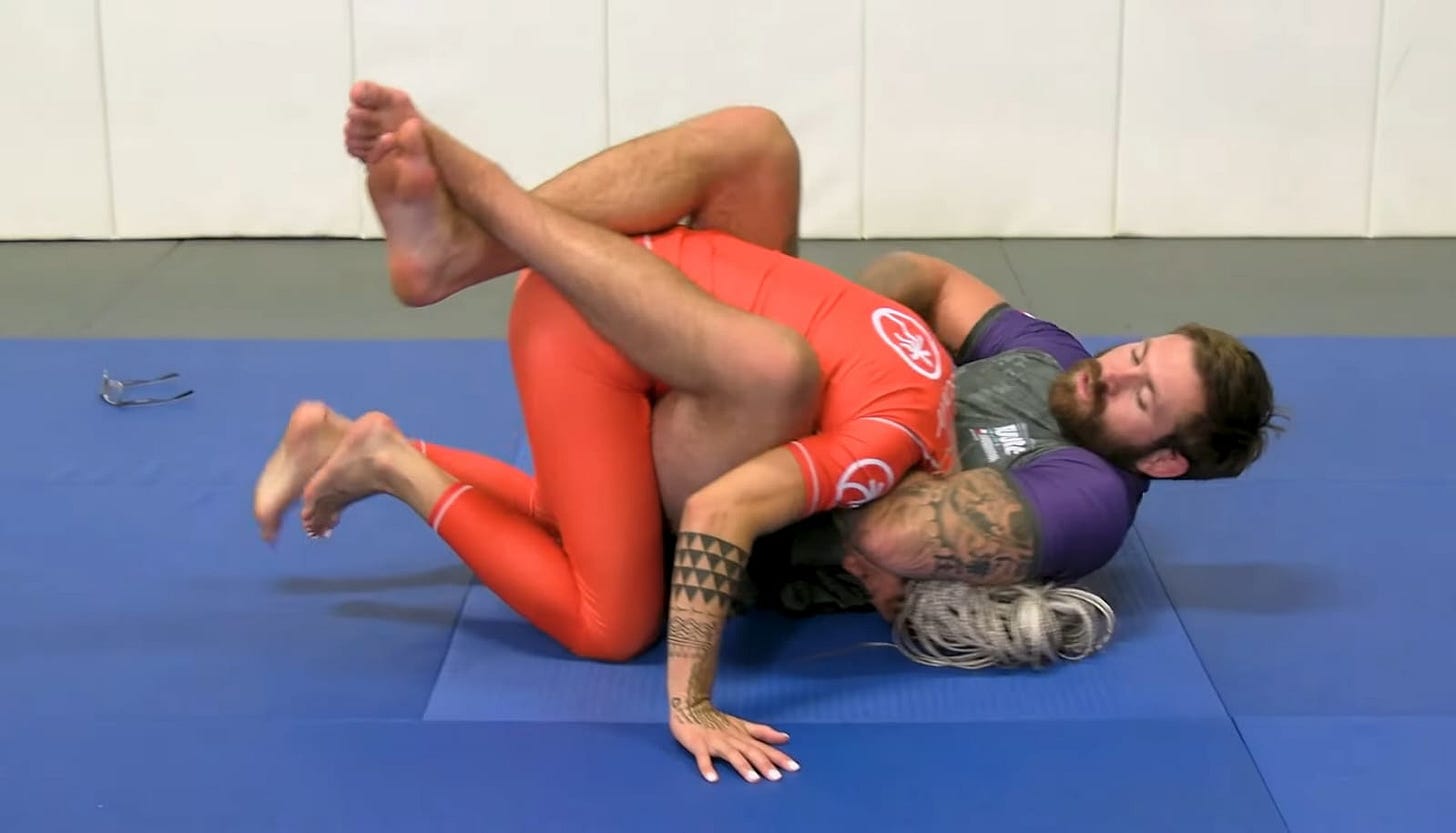
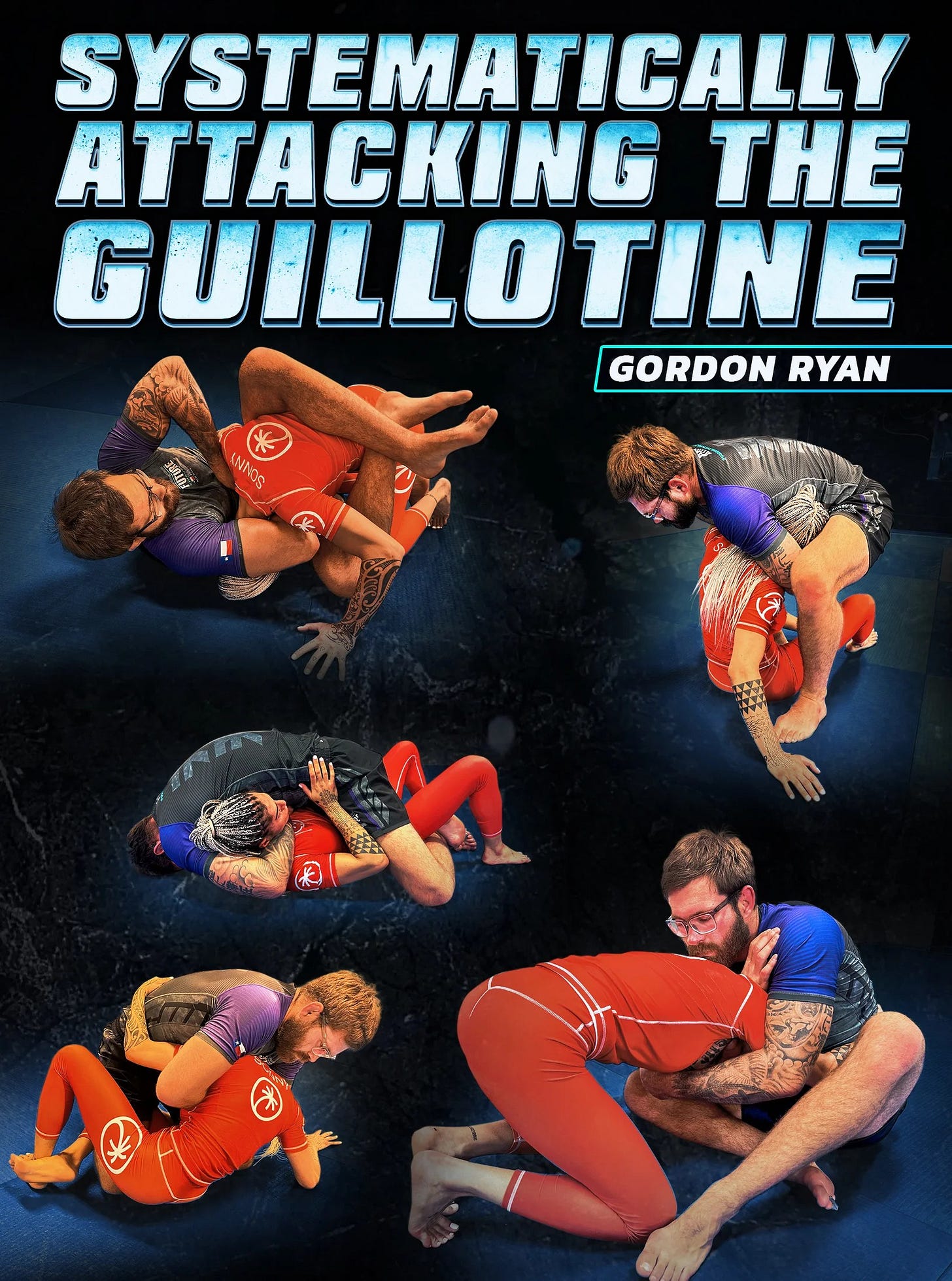
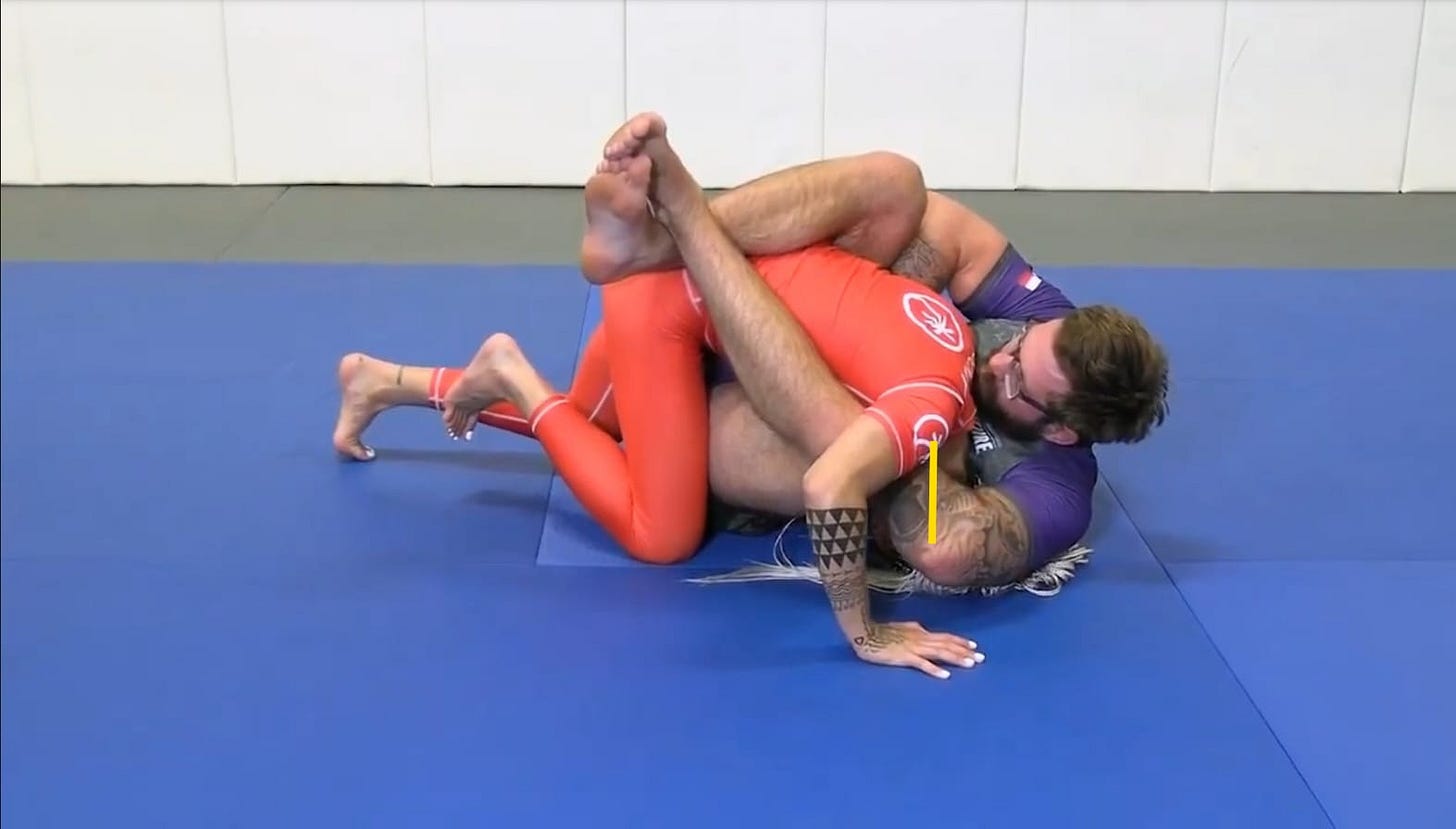
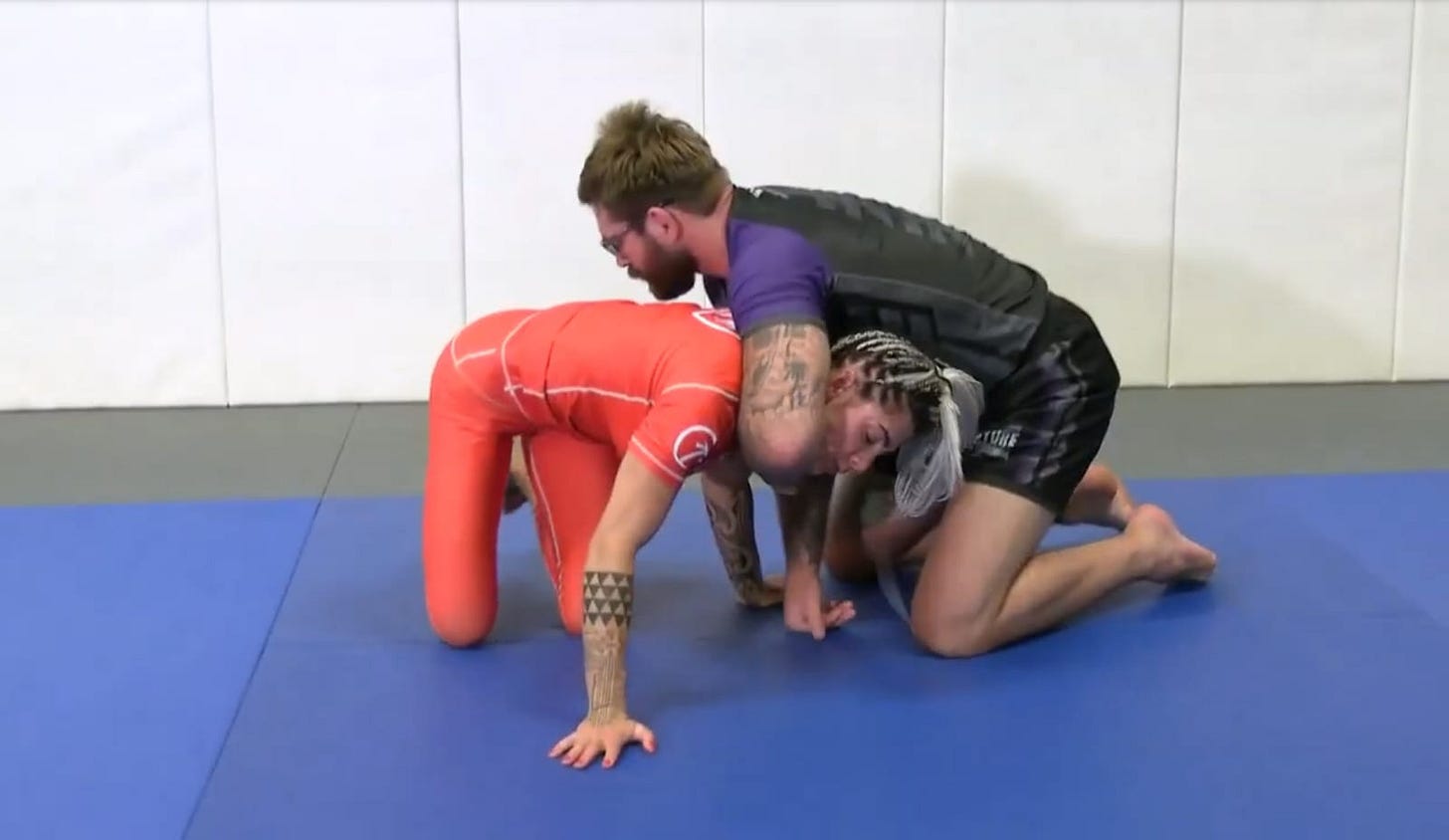
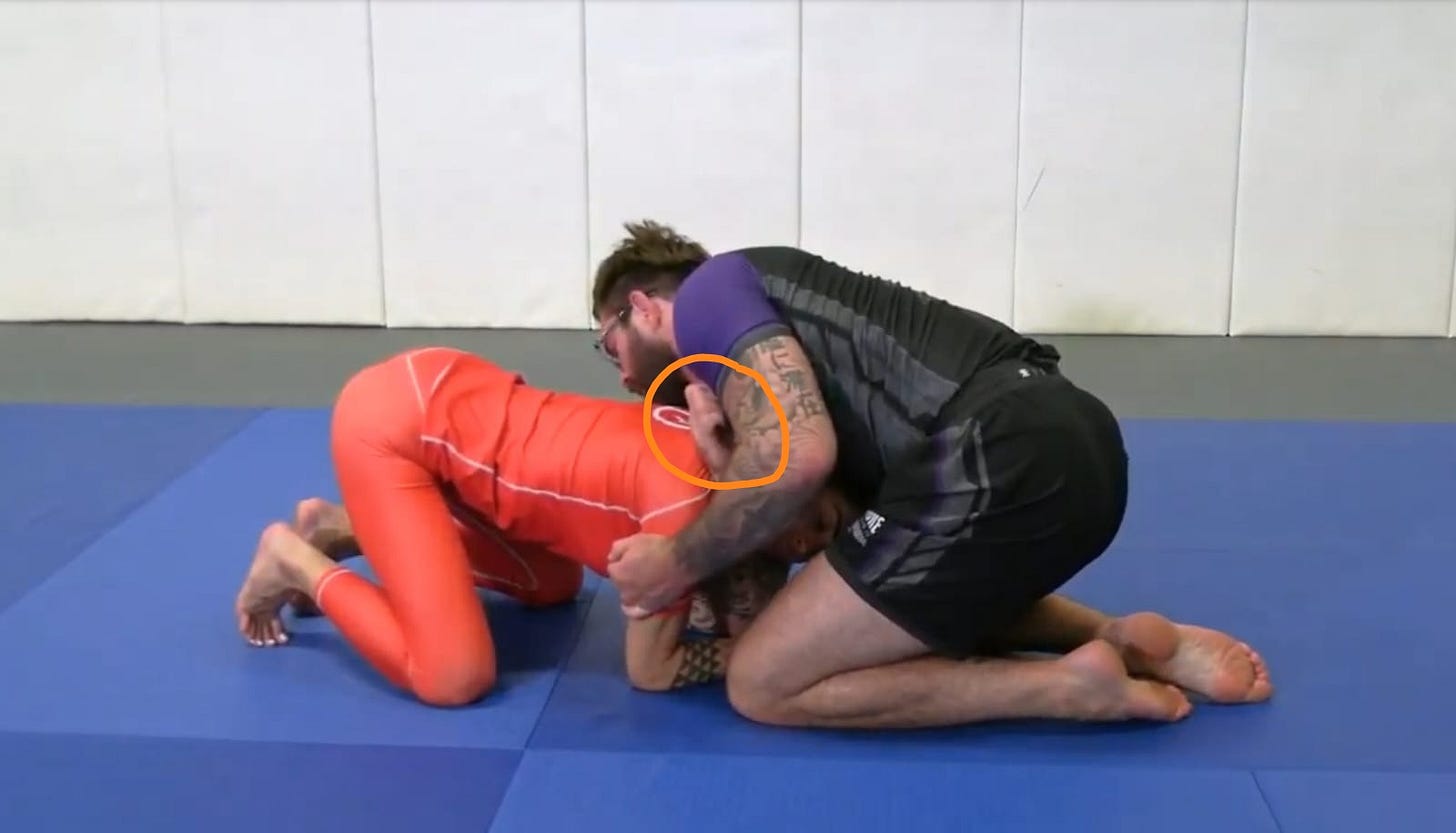
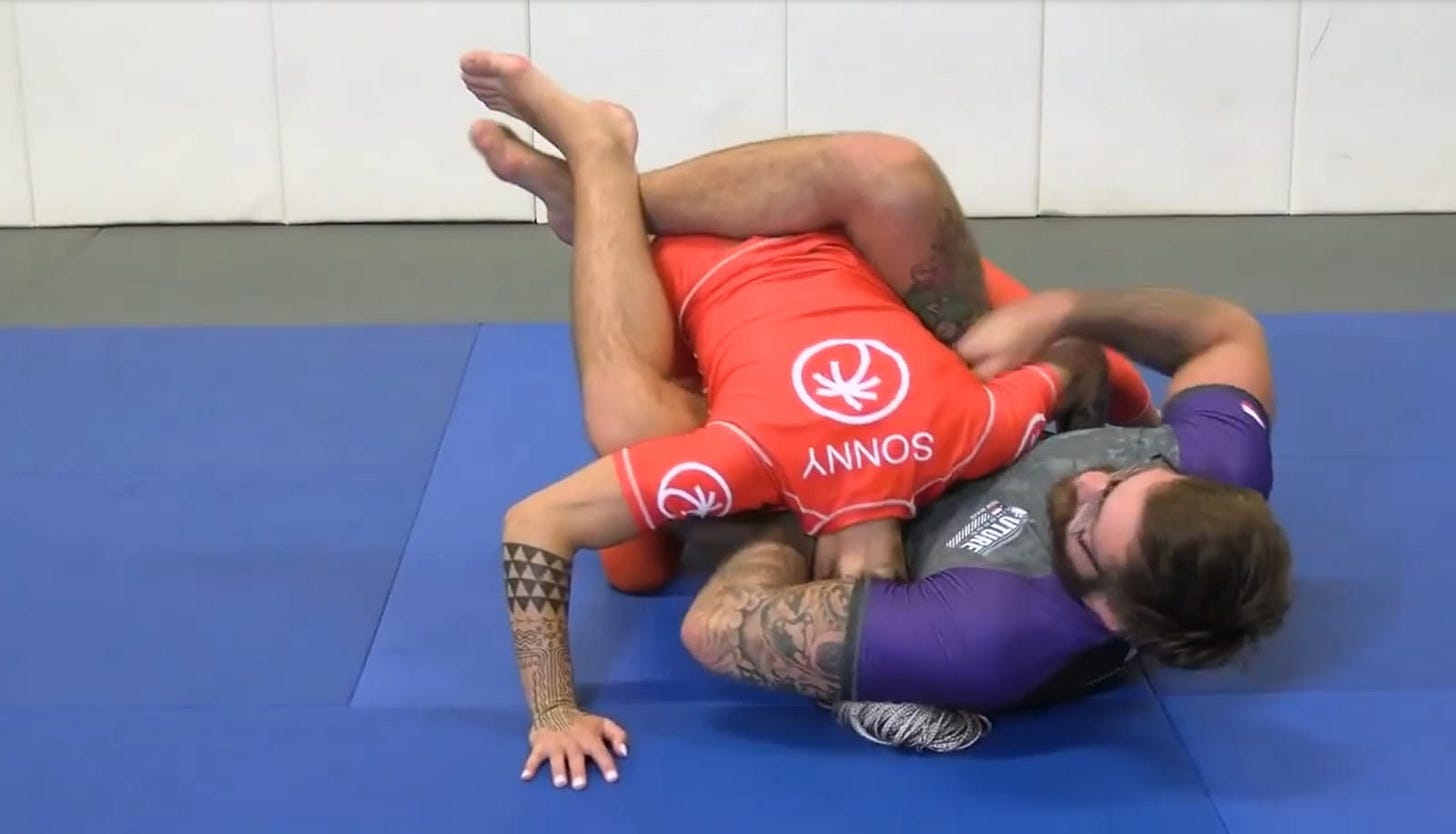
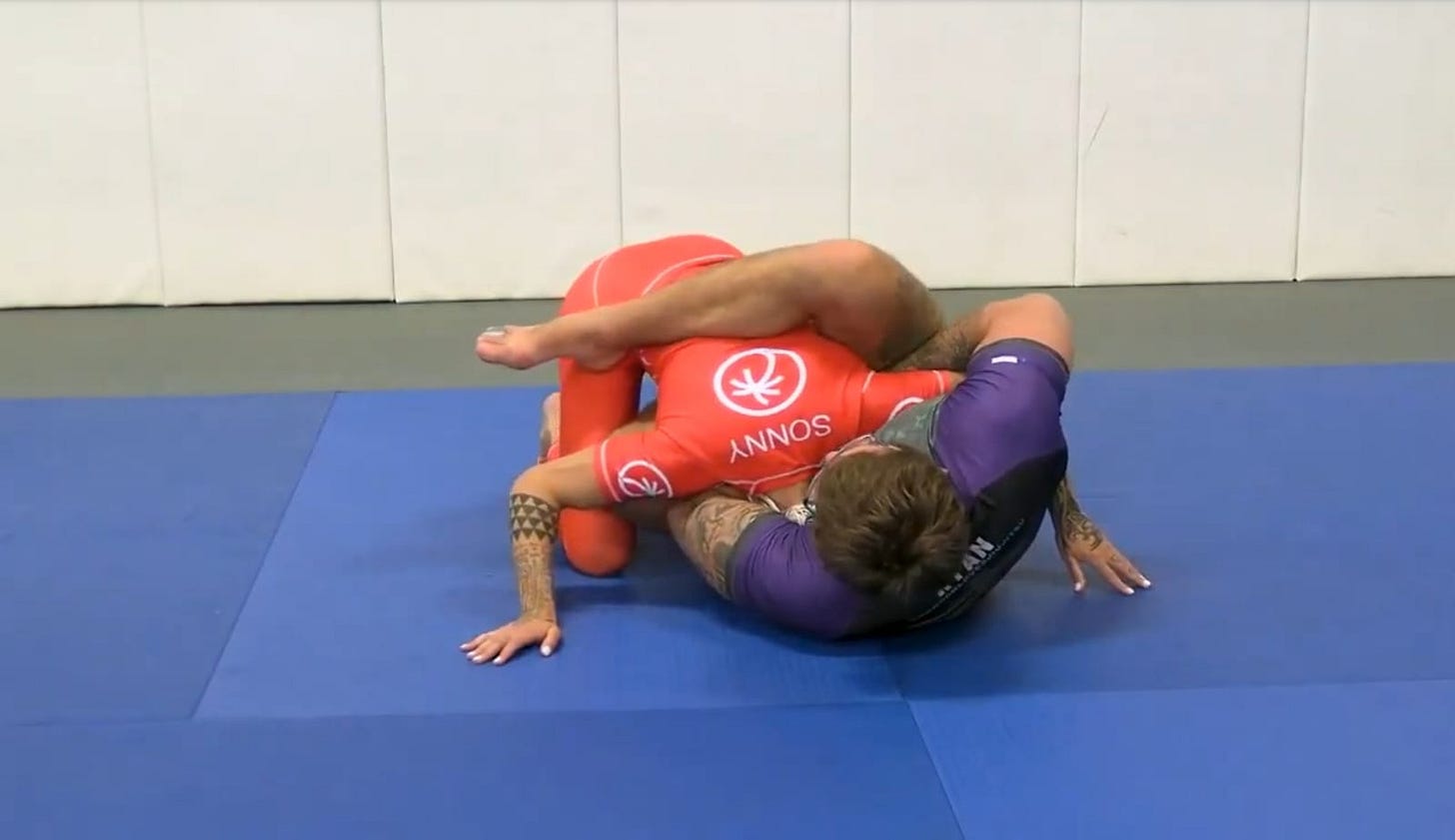
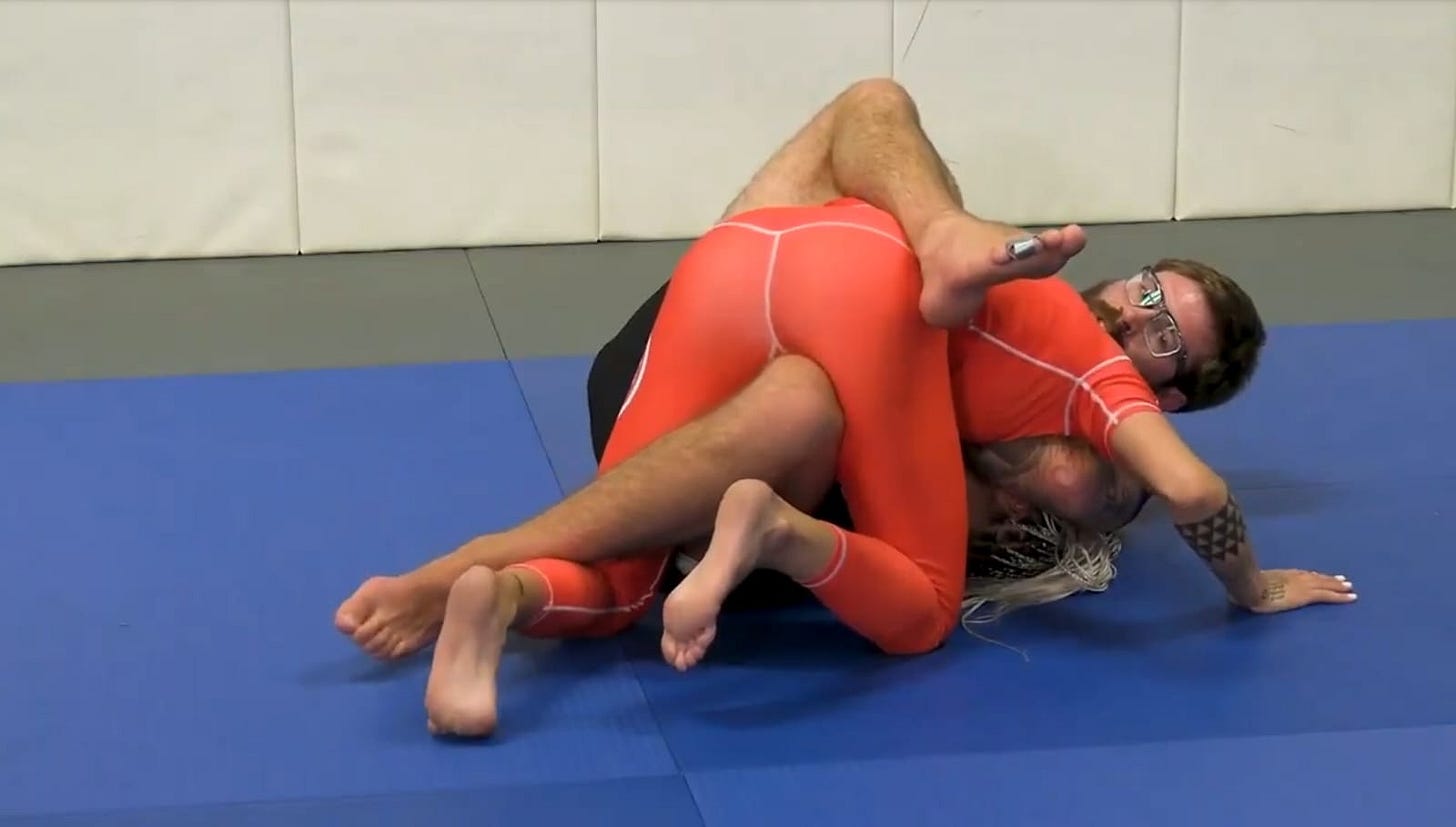
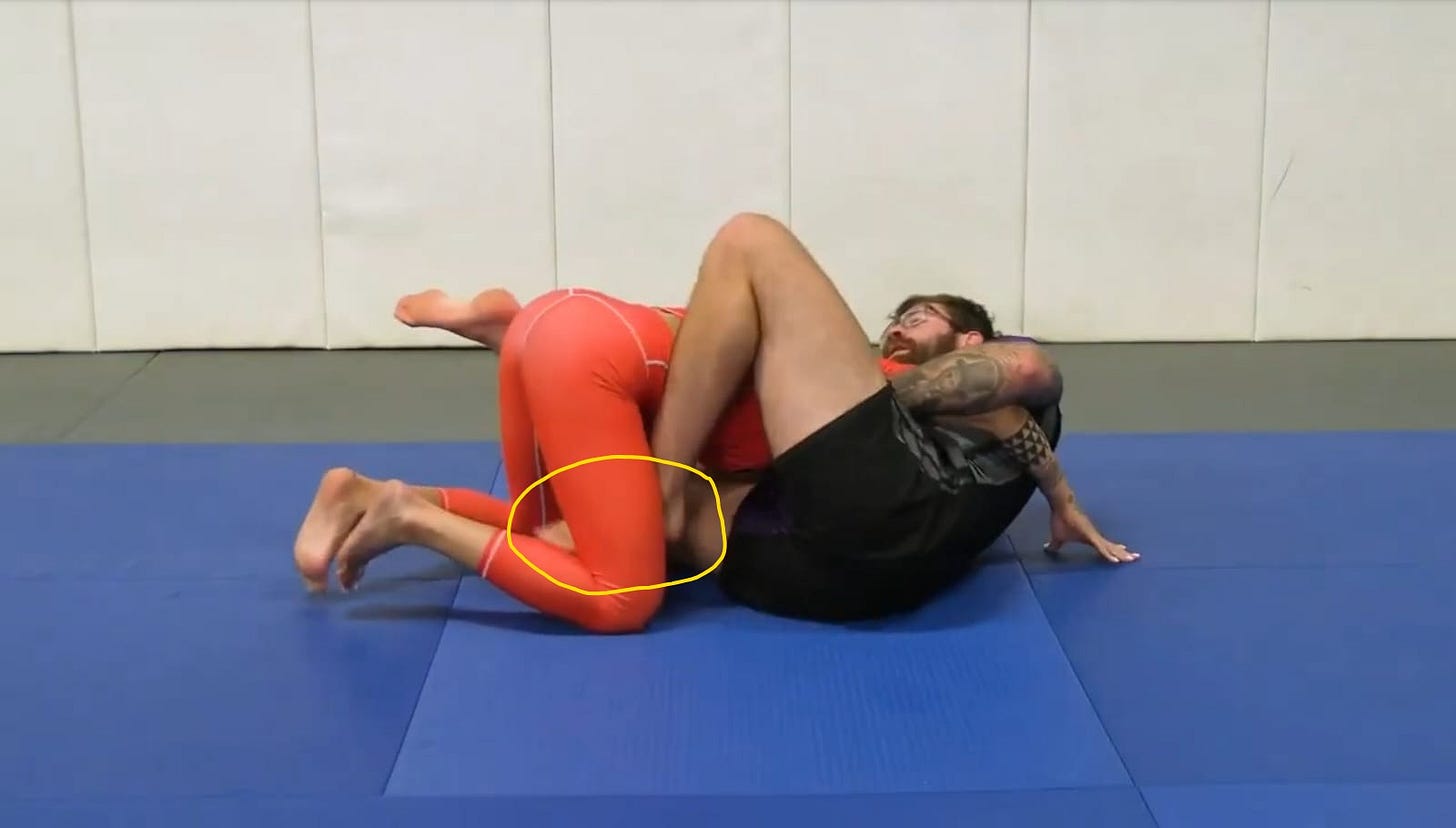

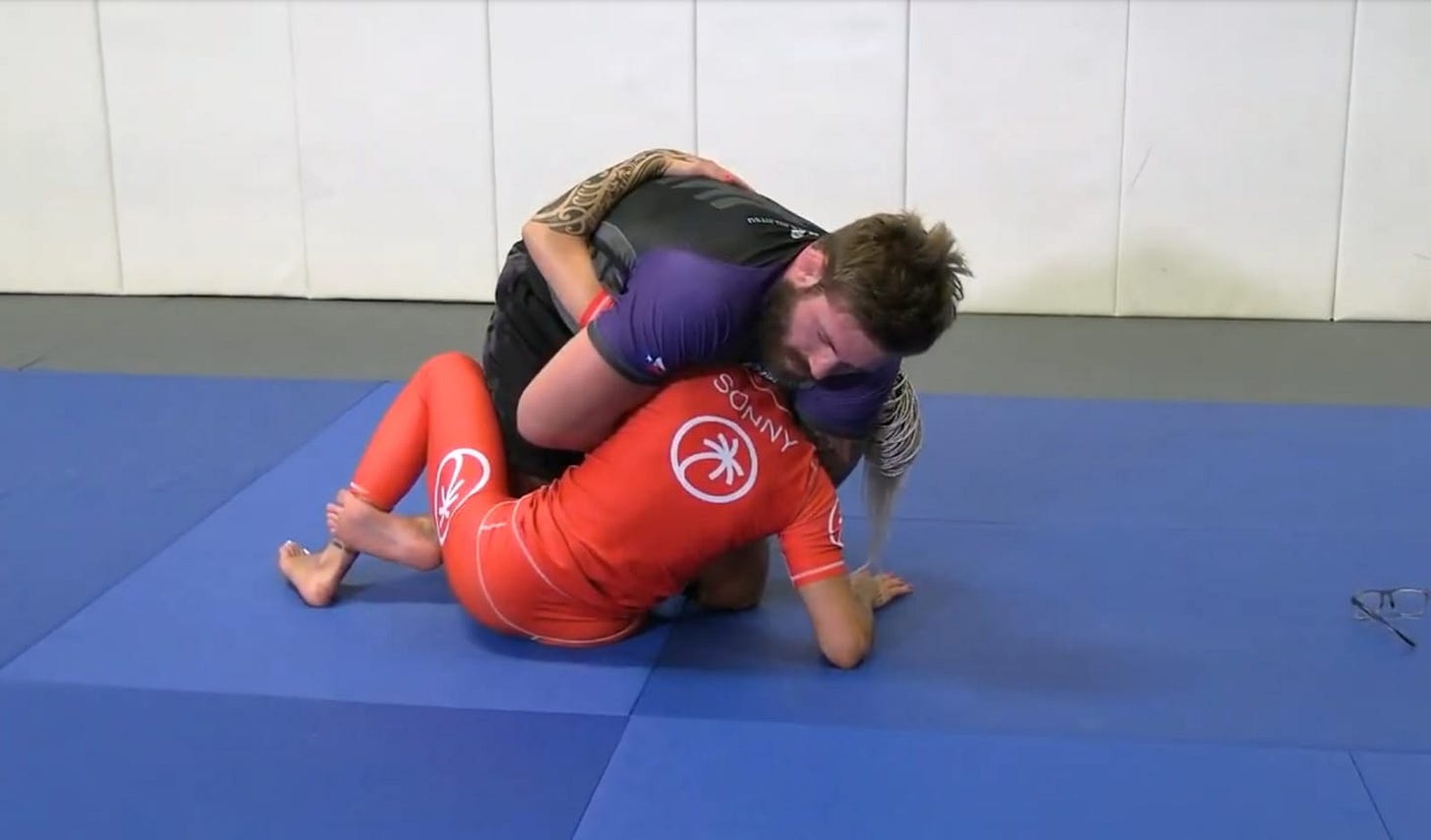
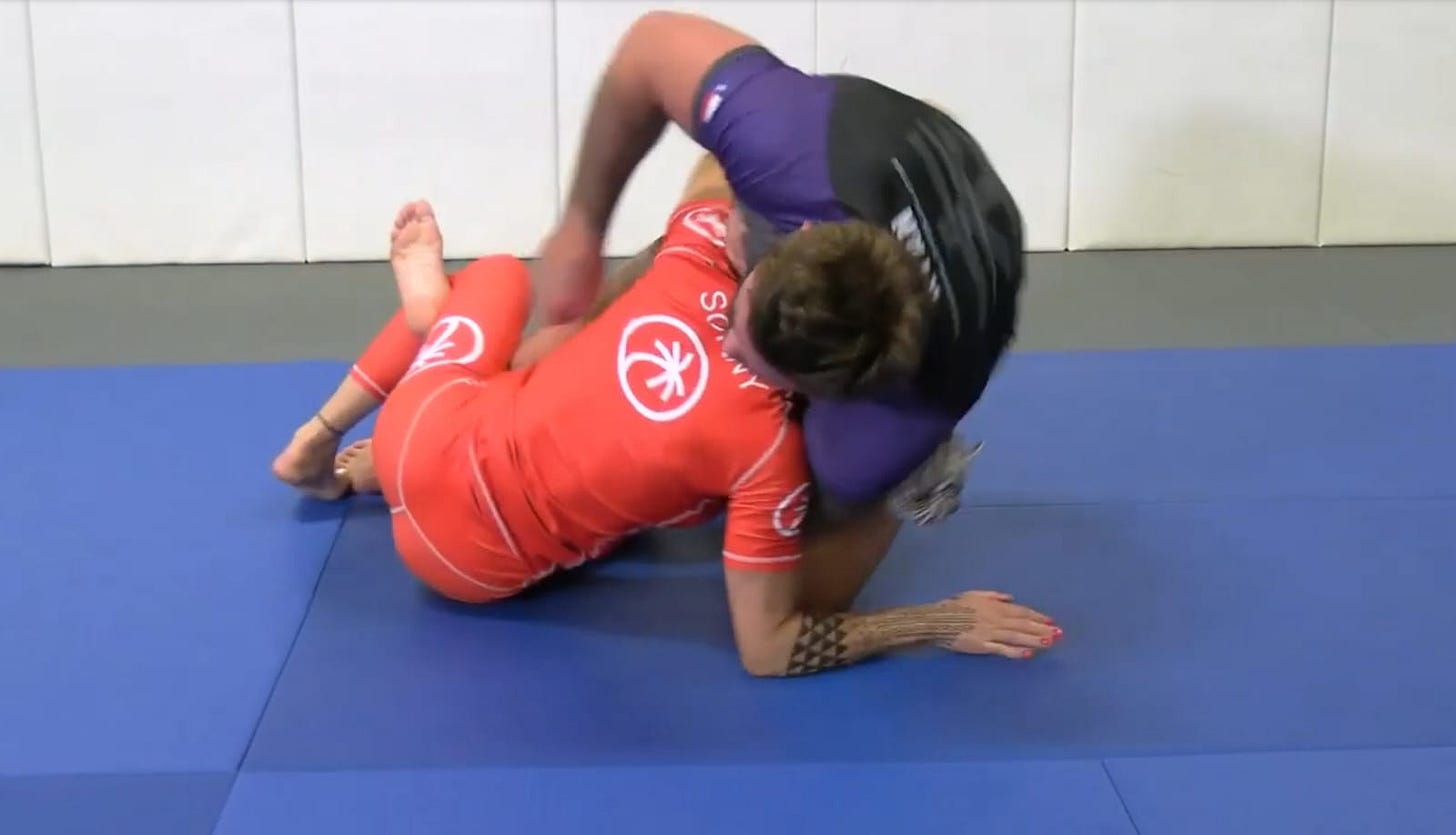
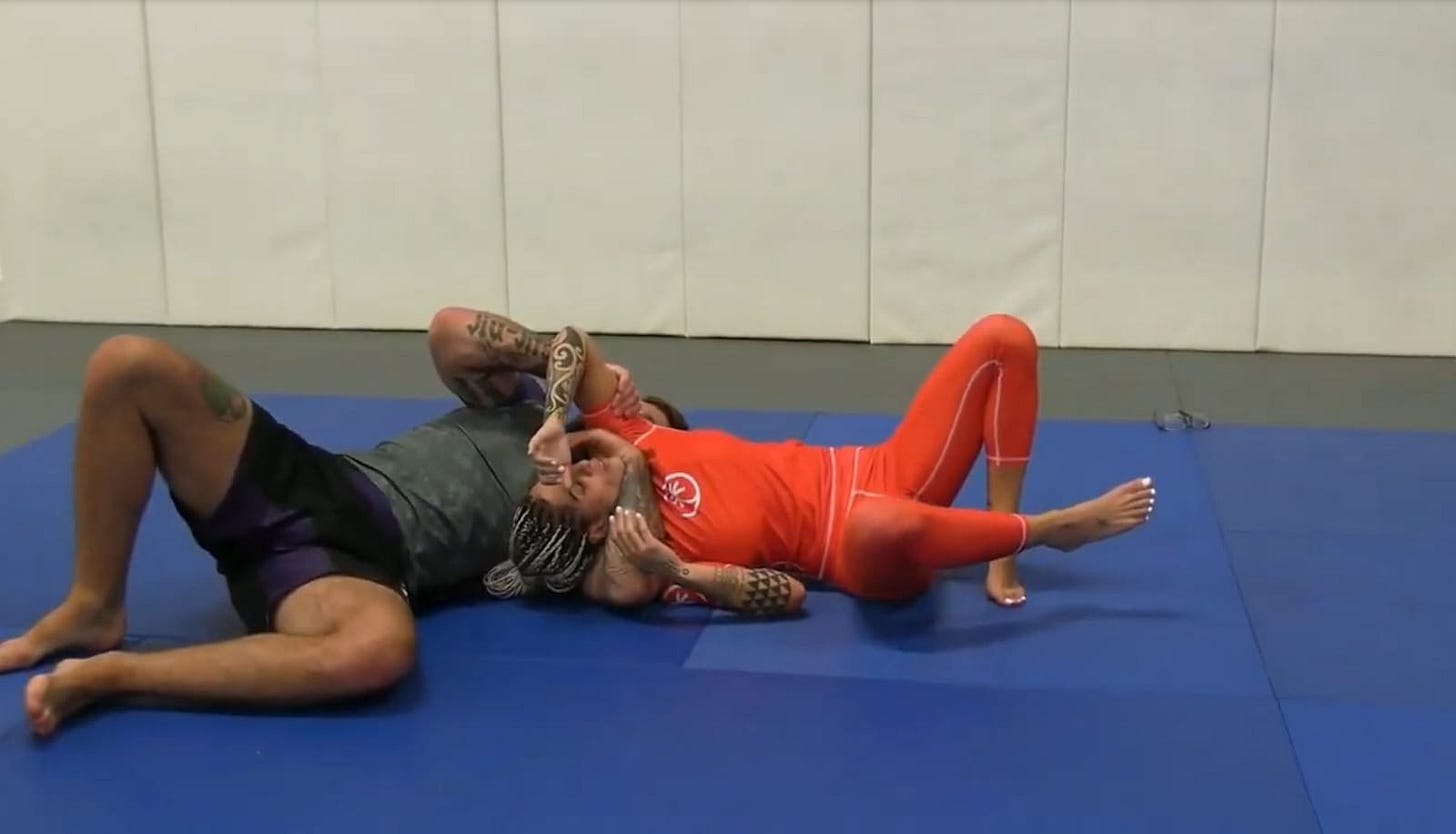
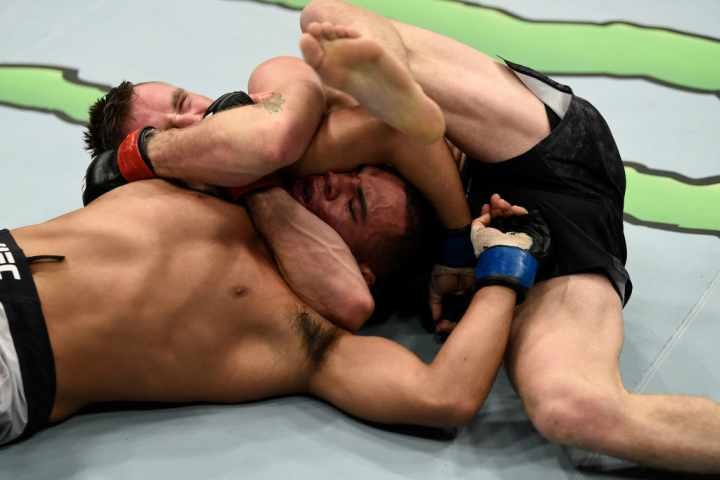
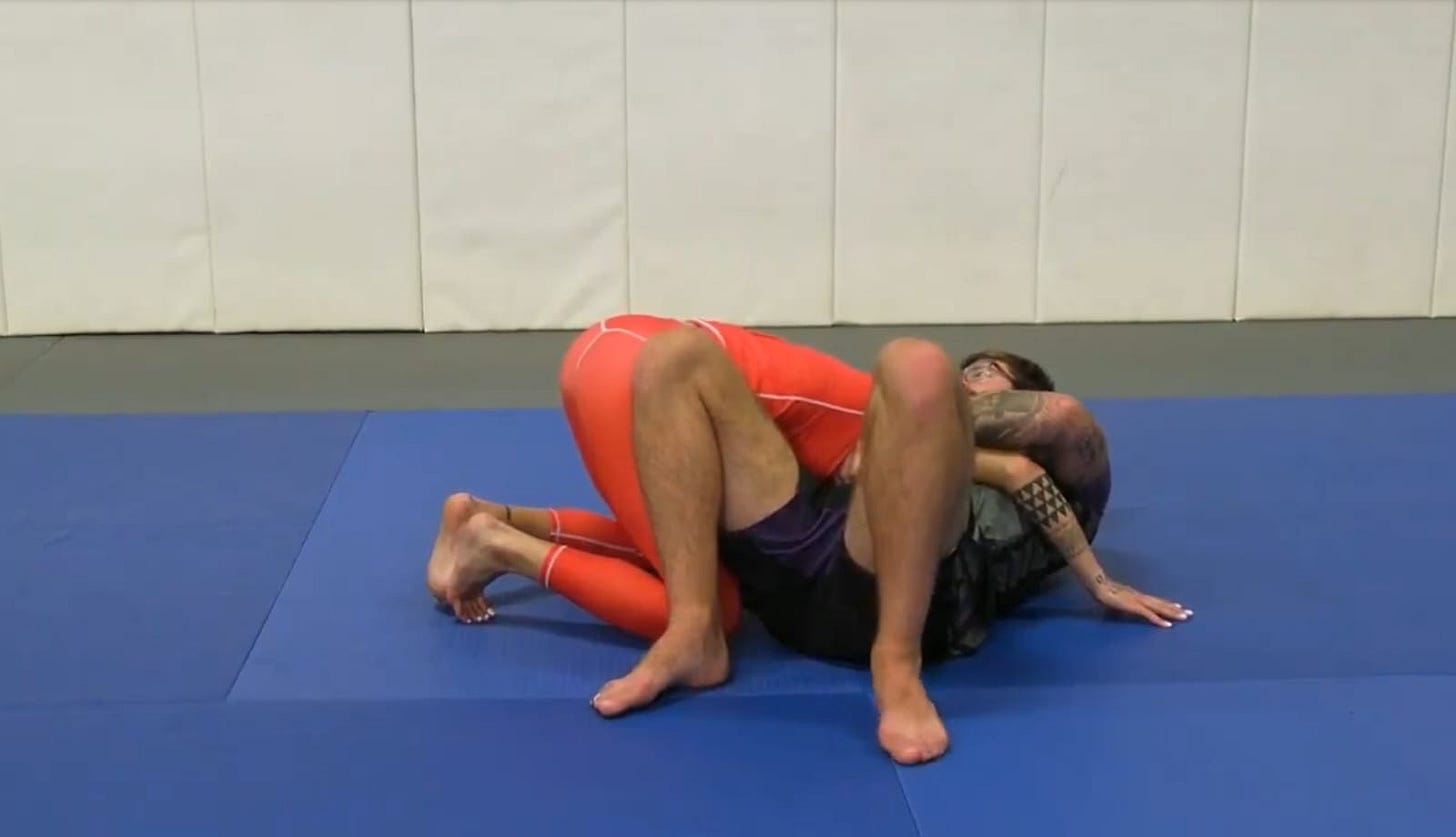
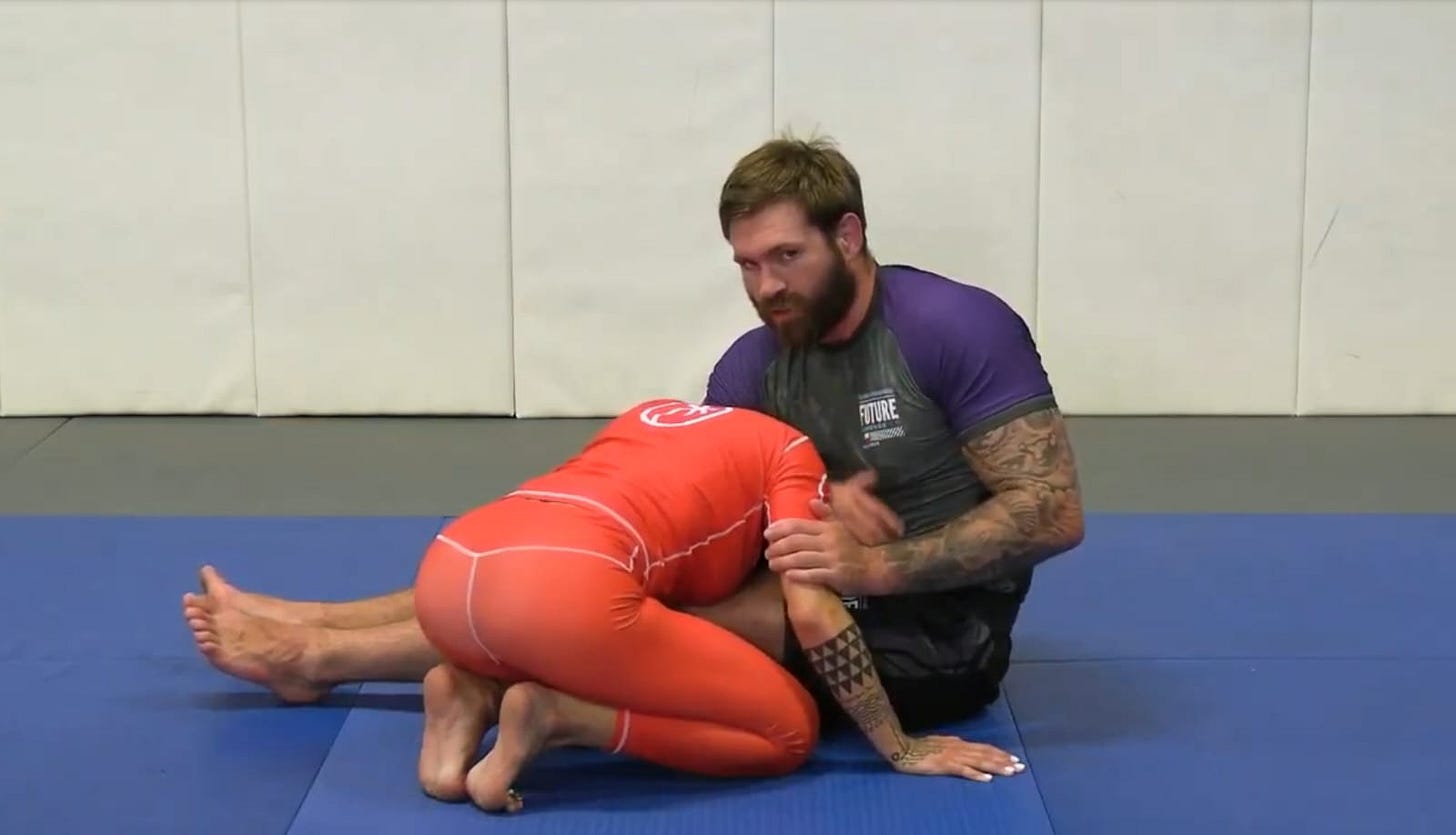
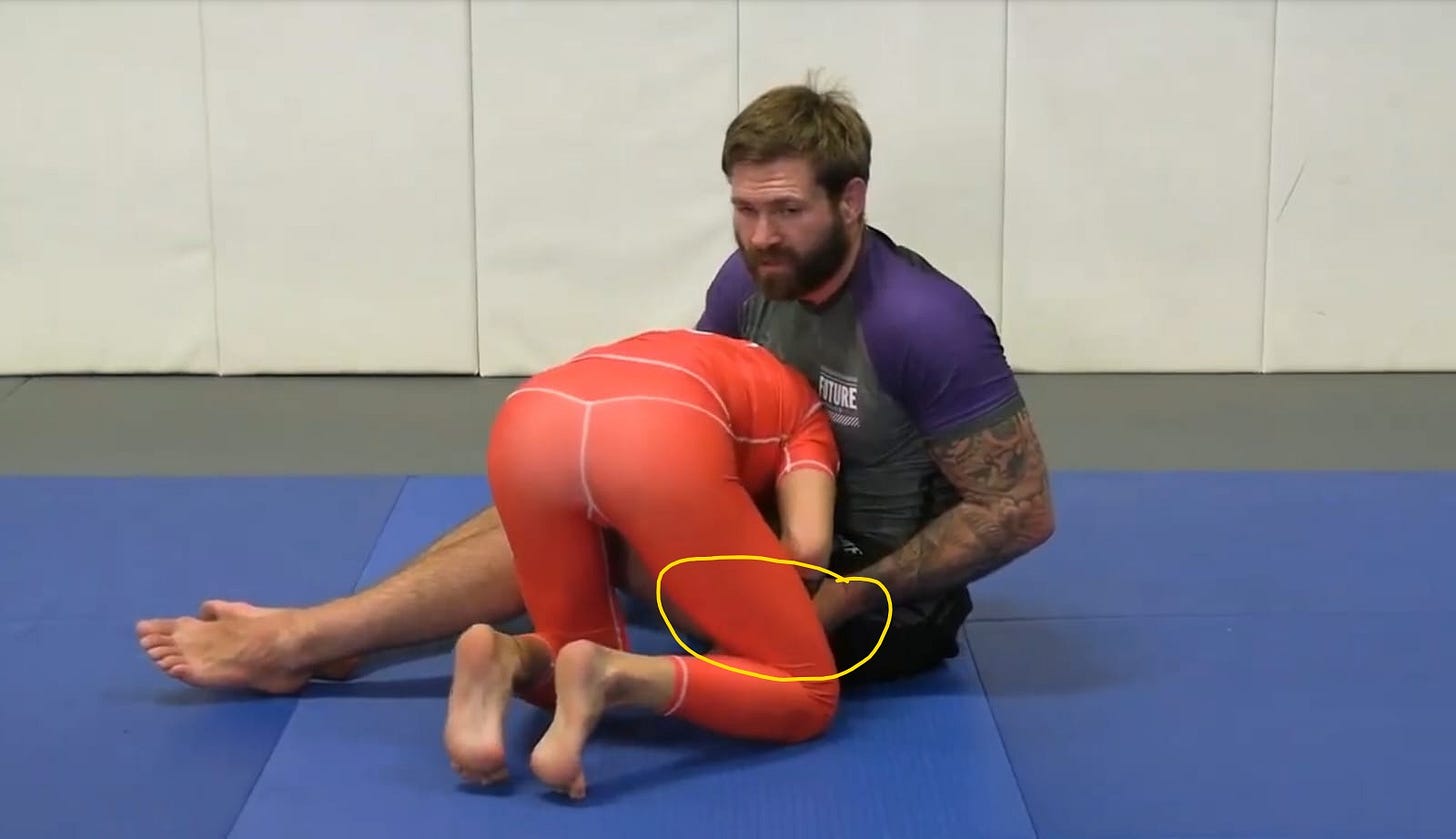
I was a newer purple belt during Covid when lockdowns happened. One way I responded was by buying a bunch of instructionals and then taking detailed notes on what I watched which included pictures. These posts remind me of that time. I hope/expect they’re as beneficial for you as anyone who reads them. Good stuff 👊🏻